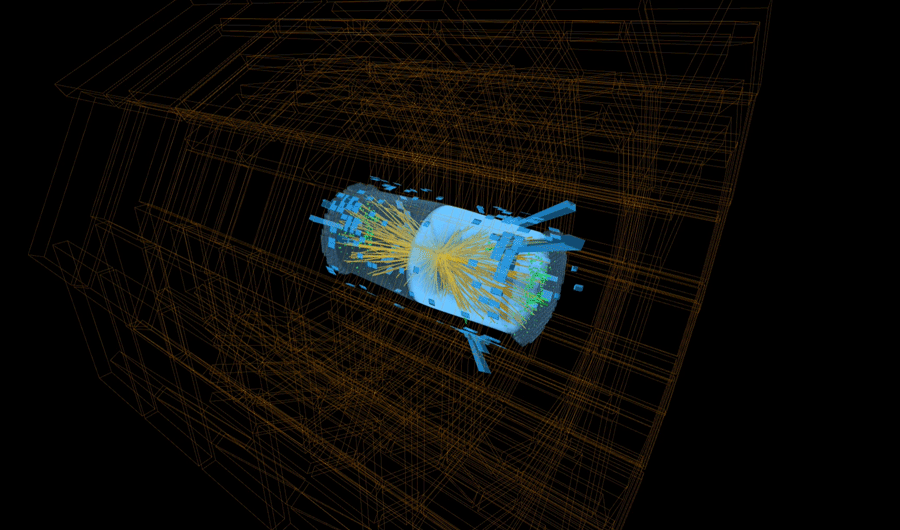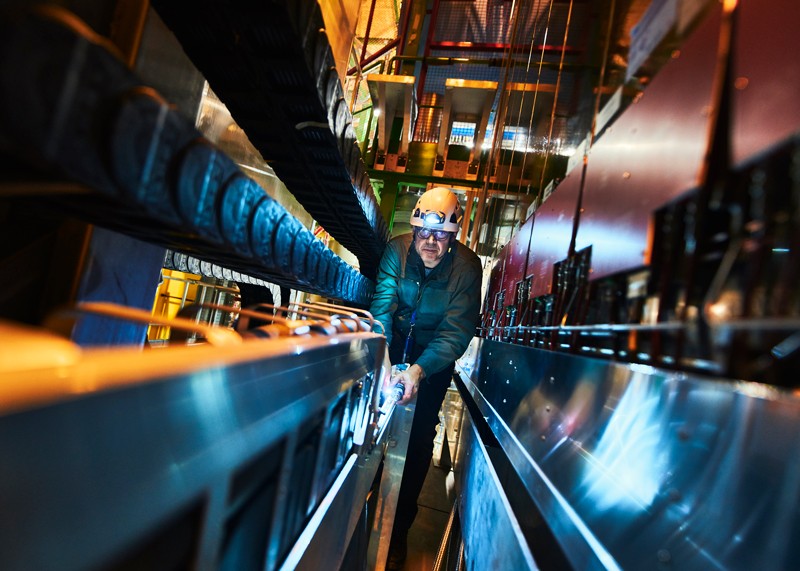
And so, making a step forward in terms of energy scale … can help redirect our thoughts.” “There are many other theories, but we have no clue which one is the right one. “We are in a situation where the Standard Model cannot explain various phenomena,” said Gianotti.

In other words, if we want to knock over more “heavy pins,” we will need more “muscle.” There might be even heavier particles that are beyond the technical capability of the LHC to produce, or the LHC could be generating them at such a low rate that it is not statistically possible to detect them. It can produce only one Higgs boson for every 10 billion collisions, due to all the energy expended on all the lighter particles. The LHC can generate collisions with an energy of 13,000 GeV - more than a hundred times the 125 GeV mass-energy equivalence of the Higgs boson. The energy required to create particles like the Higgs boson is measured in what are called gigaelectronvolts, or GeV.

Now to “create” a heavy particle like the Higgs, which is akin to knocking down a heavy pin, you need to throw the bowling ball hard enough not just to knock down the heavy pin, but also to plow through the millions of smaller pins in the way. There are a lot more light pins than heavy ones - for example one million 1-ounce pins to every 1-ton pin. To better understand why so much energy is needed to create more particles, imagine a game of bowling with millions of bowling pins in the lane, some light and some heavy. A more powerful collider can increase the rate of production and enable scientists to study the Higgs boson better. However, the LHC can produce only one Higgs boson about every billion collisions, so even with the ability to produce hundreds of millions of collisions every second, it still took LHC several years to produce enough data for the Higgs signal to rise above background noise. “So, studying the Higgs boson with the highest possible precision is a must, and a future collider will do so.”Īs particles crash into each other at near the speed of light inside a supercollider, some of their combined kinetic energy is converted into mass, creating new particles such as the Higgs. We don’t understand the family problem, as in why there are three families of particles,” said CERN Director-General Fabiola Gianotti. “We still don’t understand the mass of the Higgs boson.

(Abigail Malate, Inside Science Staff Illustrator/American Institute of Physics) The GoodĪlthough the detection of the Higgs boson marked the completion of the Standard Model in some ways, there is still plenty of work to be done.įundamental particles of the Standard Model. With at least a 10-figure price tag, scientists and engineers are debating whether the endeavor will be worth the investment. However, the price of exploring the unknown often doesn’t come cheap. Then in 2013, the LHC’s operator, known as CERN, also announced their plan for a new collider, named simply the Future Circular Collider. The planned Circular Electron Positron Collider will be 100 kilometers around, almost four times larger than the Large Hadron Collider, or LHC. In 2012, the Institute of High Energy Physics of the Chinese Academy of Sciences announced a plan to build the next great supercollider. And in science, the only way to confirm or disprove these hypotheses is to gather more data - data from better telescopes and microscopes and, perhaps, a brand-new, even bigger supercollider.

Like the unchartered territories that medieval mapmakers filled with fantastic beasts, the frontiers of physics have been filled with a wealth of hypotheses for what may lurk in the darkness. It falls short in providing explanations for mysteries such as the existence of dark matter or dark energy, or why gravity is so different from other fundamental forces. The Higgs discovery was made possible by a giant machine in Europe, known as the Large Hadron Collider that uses a 27-kilometer ring of superconducting magnets to accelerate and then smash particles together at near the speed of light.īut the Standard Model is not the be-all and end-all of physics. This particle was the last missing puzzle piece of what physicists call the Standard Model - the most thoroughly tested set of physical laws that govern our universe. (Inside Science) - In 2012, particle physicists detected the long-sought-after Higgs boson for the first time.


 0 kommentar(er)
0 kommentar(er)
